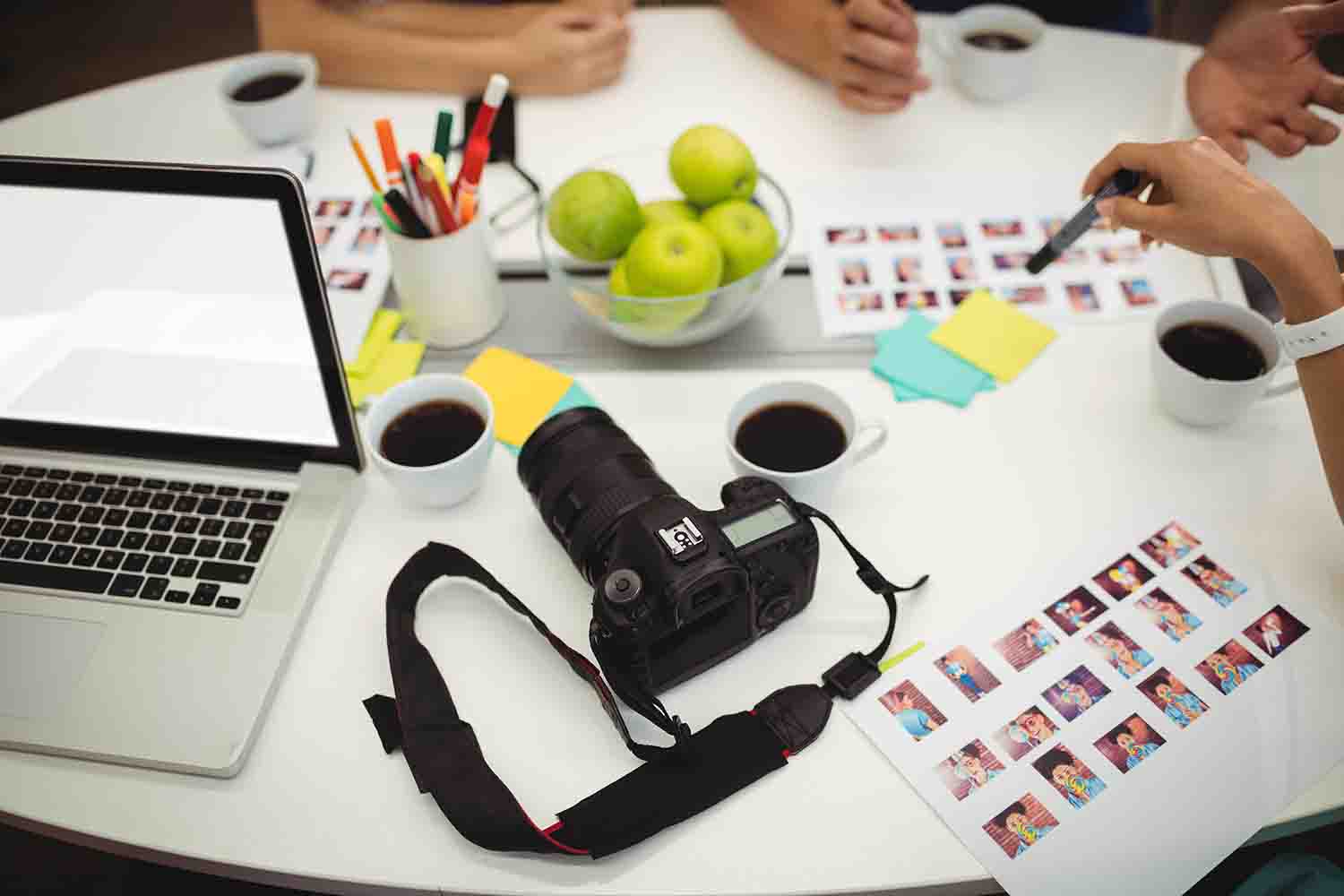Introduction
In the ever-evolving world of digital content creation, the role of artificial intelligence (AI) is becoming increasingly prominent. From generating text to crafting visual elements, AI is reshaping how we create and consume content. As photographers, this technological advancement raises intriguing questions, especially in the realm of stock imagery. A burning query that many of us ponder: Does Adobe Stock, one of the premier platforms for stock photography, accept AI-generated images?
In this blog post, we embark on a journey to explore the submission criteria for Adobe Stock and investigate the extent to which AI-generated images fit within this framework. We'll delve into the intricacies of Adobe Stock's guidelines, discuss the concept of authenticity and originality, and weigh the creative potential and limitations of AI-assisted content. Ethical considerations and legal implications will also be under our scrutiny, along with the perspectives of both stock photographers and image buyers.
[caption id="attachment_192032" align="alignnone" width="1280"] Adobe Stock[/caption]
Adobe Stock[/caption]
Also Read This: Mastering Tagging on EyeEm: Tips and Tricks
Understanding Adobe Stock Submission Guidelines
To navigate the world of Adobe Stock effectively, it's essential to have a solid grasp of their submission guidelines. These guidelines ensure that the images you submit meet the platform's quality standards and legal requirements, increasing the chances of acceptance and enhancing the overall user experience for buyers. Here's a breakdown of the key elements to understand within Adobe Stock's submission guidelines:
Technical Specifications:
- Image size and resolution: Adobe Stock typically requires high-resolution images, usually with a minimum of 4MP (megapixels) and up to much higher resolutions.
- Image format: Accepted formats often include JPEG or other common image formats.
- Compression and quality: Images should have a balance between file size and image quality to ensure sharpness without excessive compression artifacts.
Image Quality:
- Focus and sharpness: Images must be in focus and sharp, with no blurriness or soft focus.
- Proper exposure: Adequate lighting, appropriate contrast, and accurate color balance are essential.
- Minimal noise and artifacts: Keep noise and digital artifacts to a minimum, especially in high-ISO images.
- Avoid overprocessing: While post-processing is allowed, ensure it doesn't result in unnatural or overly edited images.
Composition and Commercial Appeal:
- Composition: Pay attention to the rule of thirds, leading lines, and balanced framing to create visually appealing images.
- Commercial viability: Images should have potential use in various commercial projects, such as advertising, editorial content, and marketing materials.
Model and Property Releases:
- Releases: If your images feature recognizable people, property, or private locations, you may need to provide signed model and property releases.
- Editorial vs. Commercial: Understand the distinction between editorial and commercial use, and when releases are necessary for each.
Copyright and Intellectual Property:
- Original work: Ensure that your images are original and not subject to copyright violations or infringements.
- No trademarks or logos: Images should not include recognizable logos or trademarks unless they're incidental to the main subject and are not a prominent focus of the image.
Relevant Keywords and Descriptions:
- Metadata: Add accurate and descriptive titles, keywords, and descriptions to your images to increase their discoverability.
- Avoid misleading information: Keywords should genuinely reflect the content of the image and not be misleading or irrelevant.
By understanding and adhering to these submission guidelines, you can improve the quality and marketability of your images on Adobe Stock. This knowledge not only increases your chances of acceptance but also demonstrates professionalism and respect for the platform's standards.
[caption id="attachment_192040" align="alignnone" width="1500"] Adobe Stock Submission Guidelines[/caption]
Adobe Stock Submission Guidelines[/caption]
Also Read This: From Passion to Profit: A Step-by-Step Guide on How to Sell on Shutterstock
The Role of Authenticity and Originality
Authenticity and originality are pivotal in the world of stock photography, shaping the way images connect with viewers and the value they hold for buyers. Understanding the role of these principles not only contributes to the success of your work on platforms like Adobe Stock but also shapes the broader perception of your portfolio. Let's delve into the significant role authenticity and originality play:
Building Trust:
- Authenticity: Images that feel genuine and sincere resonate with viewers. Authenticity fosters trust between the photographer and the audience, creating a connection that goes beyond the image itself.
- Originality: Original images stand out in a sea of stock photos. Buyers are more likely to choose unique, fresh content that sets their projects apart.
Conveying Emotions:
- Authenticity: Authentic images often evoke real emotions. Whether it's capturing genuine smiles, raw moments, or unscripted interactions, authentic photos can stir powerful feelings in viewers.
- Originality: Original images allow you to express your unique perspective and tell a story in a way that hasn't been told before. This storytelling potential can deeply engage viewers.
Meeting Diverse Needs:
- Authenticity: Authentic images cater to a diverse range of needs. They can be used in various contexts, from illustrating real-life scenarios to conveying specific emotions or cultures.
- Originality: Original images open up creative possibilities for buyers. They can adapt to different projects and purposes, making them versatile assets for a wide range of applications.
Standing Out in a Crowded Market:
- Authenticity: Authentic images cut through the noise. In a competitive market, photos that genuinely connect with the audience are more likely to capture attention.
- Originality: Original images have a higher chance of standing out. They present a fresh perspective that piques curiosity and sets them apart from generic or overused visuals.
Strengthening Your Brand:
- Authenticity: Authentic images reflect your brand values and style. Consistently producing authentic content builds your brand's reputation as a source of genuine and relatable visuals.
- Originality: Original images become a signature of your brand. When buyers recognize your unique style and approach, it can lead to a loyal following seeking your distinct content.
Balancing authenticity and originality is key. While authenticity creates emotional resonance and relatability, originality offers innovation and differentiation. Strive to create images that feel authentic while presenting a fresh and unique perspective, ensuring that your portfolio on platforms like Adobe Stock is not only marketable but also resonates deeply with your audience.
[caption id="attachment_192041" align="alignnone" width="1500"] The Role of Authenticity and Originality[/caption]
The Role of Authenticity and Originality[/caption]
Also Read This: Guidelines for Mobile Photography Submissions: Does Alamy Accept iPhone Photos?
Technological Advancements and Creative Tools
In the rapidly evolving landscape of stock photography, technological advancements and creative tools are revolutionizing how photographers create, enhance, and share their work. Staying abreast of these innovations not only empowers you to produce higher quality images but also offers new opportunities for creative expression. Let's explore the significant role of technological advancements and creative tools:
High-Quality Equipment:
- Advanced Cameras: Modern digital cameras offer higher resolutions, improved dynamic range, and enhanced low-light performance. These capabilities allow you to capture stunning details and vivid colors, essential for stock photography.
- Lenses: A wide range of high-quality lenses provides creative flexibility. From wide-angle to telephoto, each lens type opens up unique compositional possibilities.
Post-Processing Software:
- Image Editing Tools: Professional software like Adobe Photoshop and Lightroom enables precise adjustments, from exposure and color correction to retouching and compositing. These tools enhance image quality and polish your work.
- AI-Powered Enhancements: AI-driven plugins and features within editing software can simplify certain tasks, such as noise reduction, object removal, or intelligent image enhancements.
Mobile Photography:
- Smartphone Cameras: The ever-improving capabilities of smartphone cameras offer a convenient way to capture high-quality images on the go. They're particularly useful for spontaneous moments and behind-the-scenes shots.
- Mobile Editing Apps: Powerful editing apps for mobile devices allow you to refine your images right from your phone, providing quick and efficient post-processing options.
AI and Machine Learning:
- Image Recognition: AI-driven image recognition tools can help you find the right keywords for your images, improving discoverability on stock platforms like Adobe Stock.
- Auto-Tagging: Some platforms use AI to automatically generate tags and descriptions for your images, streamlining the metadata process.
3D Modeling and Rendering:
- 3D Modeling: If you're skilled in 3D modeling, you can create unique and customizable images, perfect for specific design needs or conceptual projects.
- Rendering: High-quality rendering software allows you to generate photorealistic images, opening up new creative horizons.
Creative Cloud and Online Resources:
- Creative Cloud Services: Adobe's Creative Cloud offers a suite of tools tailored for photographers, designers, and creatives. This comprehensive ecosystem enhances collaboration and access to the latest features.
- Online Resources: Tutorials, forums, and online communities provide valuable insights and help you stay updated on the latest techniques and trends.
By embracing these technological advancements and utilizing creative tools effectively, you can elevate the quality and creativity of your stock photography. Incorporating these innovations not only enhances your portfolio but also allows you to keep pace with the ever-evolving demands of the market.
[caption id="attachment_192042" align="alignnone" width="1500"] Technological Advancements and Creative Tools[/caption]
Technological Advancements and Creative Tools[/caption]
Also Read This: Cutting the 123RF Sign from a Photo: Step-by-Step
Creative Potential and Limitations of AI-Generated Images
AI-generated images have opened up exciting possibilities in the realm of creativity, offering new ways to create, enhance, and conceptualize visuals. However, like any tool, AI has its limitations that photographers and creators must be aware of. Let's explore the creative potential and limitations of AI-generated images:
Creative Potential:
- Efficiency and Automation: AI tools can automate certain tasks, such as image enhancement, retouching, and tagging, significantly streamlining the post-processing workflow. This efficiency frees up more time for photographers to focus on creative aspects.
- Concept Generation: AI-generated visuals can serve as inspiration for creative concepts. They can spark new ideas, help refine compositions, or guide the exploration of unique styles.
- Customization: AI allows for customized content generation based on specific parameters, making it possible to create personalized images for diverse needs and preferences.
- Complex Data Analysis: AI can analyze large datasets to identify trends, preferences, and emerging visual styles. This information can guide photographers in creating images that resonate with current market demands.
Limitations:
- Lack of Context and Intuition: AI lacks the human understanding of context, emotions, and intent. It may struggle to capture the subtle nuances and emotions that a human photographer can infuse into an image.
- Creativity vs. Replication: While AI can replicate existing styles or generate content based on learned patterns, it might struggle with true creativity, innovation, and the ability to tell unique stories.
- Authenticity: Authenticity, a vital aspect of compelling imagery, can be challenging for AI to achieve. The authenticity that human experiences bring to photography may be missing in AI-generated images.
- Overuse and Generic Output: If not used carefully, AI-generated images can contribute to a flood of generic visuals that lack uniqueness, diluting the market's overall quality and appeal.
- Technical Limitations: AI-generated images may not always meet the technical criteria and quality standards required by stock photography platforms like Adobe Stock, particularly for resolution, sharpness, and originality.
- Complex Subjects: AI-generated images might struggle with complex or abstract subjects that require deep understanding and creative interpretation.
- Ethical Considerations: The use of AI for image creation raises ethical questions, including concerns about transparency, ownership, and the impact on the work of human photographers.
Balancing the creative potential and limitations of AI-generated images is essential. While AI can be a valuable tool, it's crucial to use it thoughtfully, leveraging its strengths while infusing your work with the unique human touch that defines authentic and resonant imagery. Understanding where AI excels and where it falls short enables photographers to harness its benefits while contributing to the continued evolution of the craft.
[caption id="attachment_192043" align="alignnone" width="1500"] Creative Potential and Limitations of AI-Generated Images[/caption]
Creative Potential and Limitations of AI-Generated Images[/caption]
Also Read This: How to Download from Freepik for Free: Everything You Need to Know
Ethical and Legal Considerations
Ethical and legal considerations are paramount in the realm of stock photography, ensuring that creators, subjects, and users are treated fairly, transparently, and in accordance with the law. Respecting these considerations is essential for maintaining trust within the creative community and protecting the rights of everyone involved. Let's explore the key ethical and legal considerations in stock photography:
Model and Property Releases:
- Ethical: Obtain signed model and property releases for recognizable individuals and private properties featured in your images. This respect for privacy and consent ensures that subjects are aware of and agree to the use of their likeness.
- Legal: Model and property releases serve as legal agreements that grant the necessary rights for commercial use of the image. Having these releases in place protects both you and potential buyers from legal issues.
Authenticity and Integrity:
- Ethical: Represent subjects and scenarios authentically. Avoid creating misleading or stereotypical images that misrepresent cultures, genders, or situations. Prioritize authenticity and avoid perpetuating harmful stereotypes.
- Legal: Misleading or false representations in images may lead to legal challenges, particularly in cases where the depicted scenario is misrepresented or the image is used for deceptive purposes.
Copyright and Intellectual Property:
- Ethical: Respect the intellectual property of others. Do not use copyrighted materials without proper permission or licensing.
- Legal: Copyright infringement can result in legal consequences. Ensure that the images you submit to stock platforms are original and do not violate the rights of other creators.
Transparency in AI Use:
- Ethical: If AI tools or algorithms are used in the creation or enhancement of your images, be transparent about this fact. Buyers should be aware of the extent of AI involvement in the creation process.
- Legal: Some jurisdictions may require transparency when AI is involved in the creation process. Full disclosure ensures compliance with relevant regulations.
Responsible Keywording:
- Ethical: Choose keywords that accurately describe the content of your images. Misleading or irrelevant keywords can frustrate buyers and damage the overall trust in stock photography.
- Legal: Misleading keywording may violate the terms of stock platforms and potentially lead to the removal of your images.
Respect for Cultural Sensitivities:
- Ethical: Understand and respect cultural sensitivities when creating and submitting images. Be mindful of cultural differences and avoid images that may be offensive or insensitive.
- Legal: Images that offend or disrespect cultural norms may not only result in a poor reputation but could also have legal implications in certain jurisdictions.
By prioritizing these ethical and legal considerations, you contribute to a positive, respectful, and compliant environment within the stock photography community. This not only benefits you but also fosters trust and ensures the sustainability of the industry for all its participants.
[caption id="attachment_192044" align="alignnone" width="1500"] Ethical and Legal Considerations[/caption]
Ethical and Legal Considerations[/caption]
Also Read This: A Beginner’s Guide to Editing Stock Images for Your Brand
Implications for Stock Photographers and Buyers
The implications of the evolving landscape in stock photography have significant effects on both photographers and image buyers, shaping how they create, select, and utilize visual content. Understanding these implications is crucial for photographers to adapt their strategies and for buyers to make informed decisions. Let's explore the implications for stock photographers and buyers:
Implications for Stock Photographers:
Diverse Offerings:
Implication: Stock photographers need to diversify their portfolios to cater to a broad range of buyer needs. This includes diverse subjects, styles, and authentic representation.
Incorporating AI Tools:
Implication: As AI tools become more prevalent, photographers can use them to enhance efficiency in post-processing and content creation. However, maintaining a balance between AI and human creativity is essential.
Adaptation to Trends:
Implication: Photographers should stay current with market trends and shifts in demand. This includes understanding popular themes, styles, and subject matters that buyers are seeking.
Ethical Considerations:
Implication: Ethical photography practices are paramount. Obtaining necessary releases, ensuring authenticity, and respecting cultural sensitivities build a positive reputation and improve the marketability of images.
Transparency in AI Use:
Implication: If AI tools are employed in the creation process, photographers should transparently disclose this fact to potential buyers. Transparency builds trust and demonstrates professionalism.
Balancing Creativity and Market Needs:
Implication: While maintaining personal creativity, photographers need to find a balance between creating unique, innovative images and fulfilling the practical needs of image buyers.
Implications for Image Buyers:
Access to Diverse Content:
Implication: Image buyers have access to a wider range of diverse content, allowing them to find visuals that align with specific project requirements.
Quality Assurance:
Implication: Buyers must scrutinize image quality, authenticity, and relevance to ensure the selected images meet their needs and resonate with their audience.
Incorporating AI-Generated Content:
Implication: As AI-generated content becomes more prevalent, buyers may encounter a mix of human-created and AI-generated images. Understanding the origin and creative process behind each image is essential.
Ethical Usage:
Implication: Buyers should respect ethical considerations in stock photography, ensuring that the use of images is in alignment with privacy, consent, and cultural sensitivity guidelines.
Staying Current:
Implication: Buyers must stay aware of emerging visual trends and evolving styles to maintain the relevance and impact of their projects.
Budget Efficiency:
Implication: Stock photography offers cost-effective solutions for diverse visual needs. Buyers can find high-quality images without the expense of custom photography.
By recognizing these implications, both photographers and buyers can navigate the stock photography market more effectively, create meaningful visual content, and make informed choices that benefit their respective goals and creative endeavors.
[caption id="attachment_192045" align="alignnone" width="1500"] Implications for Stock Photographers and Buyers[/caption]
Implications for Stock Photographers and Buyers[/caption]
Conclusion
In the dynamic world of stock photography, the collaboration between photographers and image buyers is a driving force. As photographers, embracing authenticity, adapting to technological advancements, and respecting ethical and legal considerations are essential. Buyers, on the other hand, must balance creativity, ensure quality, and stay informed about emerging trends.
Together, this synergy shapes the market, offering a diverse array of visually engaging and impactful content. As the industry evolves, it is this understanding of implications and a commitment to quality, ethics, and innovation that will continue to fuel the success and vibrancy of stock photography, creating a win-win for all stakeholders.









































